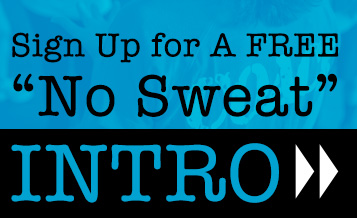25th July 2017

Training with and through injuries.
Over eight years ago now I was taking part in the prison lifting competition and it was me versus one of the boys in the end. We traded PB’s for a few lifts (there was no limit in number of attempts in this comp!) until I put 125kg on the bar, which was a weight I didn’t think he would make. I landed the clean (a shitty looking power clean) and went for the split jerk. And that was when my life changed forever.
The 125kgs or the clean and jerk was not what broke my patella tendon, it was the years of playing hard basketball for Kent, it was the lack of warming up, lack of cooling down, the lack of knowledge of how to correctly strengthen my knee at the time and the powerful medication that my doctor was giving me (diclofenic) that was actually making it worse in the long term but stopped the pain at the time. I only learnt this after conducting my own research. This is not me making excuses but these factors put my knee in a terrible place.
My mind set for the rehab at the time was unsure. Should I train and divert nutritional resources away from the injured site thus delay healing?
By the by, laying in hospital I downloaded an ebook called “Movement impairment syndromes, diagnosis and treatment” By Shirley Sahramann 2001. I had such a thirst to learn why my knee broke that I completely absorbed this book. An incredibly in depth book that I didn’t understand at first. Some of the link wording I didn’t know the meaning of so I looked it up and learnt it before carrying on digesting the sentence. It was a long process but time I had plenty of. I learnt physiology that had no relevance to my knee but I wanted a holistic and intimate knowledge of anatomy and physiology to help me truly understand everything that went on in the human body in the biomechanical sense. It was, without a doubt, a turning point in my knowledge and understanding of movement. It gave me a perspective of what is wrong with people’s movement and even better, how to correct it. It was during this time that I decided to research how to best rehab my knee.
I spent a lot of time researching the pro’s and cons of carrying on some kind of training regime, trying to establish a balanced look at what was right for me. In the end I found no reason not to keep moving and a plethora or reasons to keep going, albeit as intelligently as possible. The general rule is you have to isolate the injury and work outwards from there. What can you do that causes you no pain? How can we work around it? What can we do to improve the condition of the injury? These are the questions you need to ask.
1) Protect the investment. When you actually think about how you train, how often you train and how hard you hit it, you’re investing a hell of a lot into yourself. Why wouldn’t you want to protect that investment the best way you can? Even if it is as a damage limitation exercise.
2) Lymphatic drainage through movement around the limb. This one will take some explaining!! There are two circulatory systems, blood and lymphatic. When you receive an injury of any kind (even the minor tears bought about by general training which are desirable) a certain amount of swelling occurs. This is wanted and needed. The healing process in sequential and it starts with the inflammatory response. Reducing inflammation with the use of NSAID’s will actually stop the healing process altogether and any minor or major tears from that point will not heal. Sometimes this can stop the healing for life. There is only one method of reducing inflammation that is actually correct and healthy and that is movement. After all, why do we think we know better that 3 billion years worth of life’s evolution of how to deal with inflammation! Movement of the affected limb or around the affected limb is the only true way of getting rid of the inflammatory fluid that doesn’t need to be there. Check out this link from Kelly Starrett – https://www.youtube.com/watch?v=0UmJVgEWZu4
3) Routine – Routine is what creates habit. Habit is what gets results, not motivation. Habit is the ability to repeat the same steps over and over again, continuously, like brushing your teeth each morning. Training needs to be a habit and to be able to keep this habit, you need to be turning up to the box at the same time each week, without fail. If you’re sore, you turn up. If you’re injured, you turn up, if your training partner has bailed, you turn up. You need to have a concrete routine of always being there no matter what. This DOESN’T mean you have to turn up and do your session exactly as prescribed, it means you show up and substitute the exercises you need to, and work with the exercises you can do.
4) Mental Strength + Focus – You may have experienced this, when you have a goal and you are driven towards it you tend to be more focused with your nutrition, your training, your riding and how much sleep you get. Everything seems much easier. Whereas when there is no goal, or something that holds you back from achieving your goal, nutrition isn’t taken as seriously, training isn’t taken as seriously and everything starts to slide. This is common during injury. Racers lose drive with their training because their goal seems unattainable at the time. When you start to shift your mindset and still continue with your ROUTINE, you will find everything will be easier to continue with. If you see that your strict overhead press has now gone from 20kg to 30kg because you have been working on it while your leg heals, then this helps to spur you on and keep you going. There is a higher chance of you eating the right food and holding onto that drive you need to push you through when you are doing something productive that pushes you towards what you want to achieve. Initially, it will take a strong mental focus but once you start to see areas of your training improving (i.e.. flexibility), you start to realise that the injury is just a detour, not a dead end road.
5) To make progress in previously neglected domains and positions. It’s well known that Samantha Briggs suffered a patella fracture and during that time took the opportunity to work on her upper body gymnastics. This, as is evident, is now amongst the best in the world. How many times do you ‘realise’ you need to do more upper body flexibility, or hip or ankle? There is so much we can gain by dedicating some focus onto previously neglected areas.
6) To promote a positive ‘can do’ mindset. This is central to White Cliffs CrossFit’s core values in promoting positivity and the coaches will push that ethos into members. By learning methods and developing mental strategies to cope in areas outside of the CrossFit box.
7) Correct imbalances. Now might be the best opportunity to correct the imbalances that may have even caused the injury in the first place. We all have imbalances and more and more coaches and therapists are correcting the movement issues of their clients. If you do not know any of your muscular imbalances then find yourself a good coach and get on it!
8) The Crossover phenomenon. Also known as crossover education. The mechanisms underlying the crossover effect are still unclear. It is when a unilateral stimulus results in bilateral changes. In layman’s terms, training one leg will result in positive changes in both legs. This obviously has profound benefits for injury rehab and the results are well documented. As an example, to rehab a ruptured bicep, you would perform weighted bicep curls in the good arm and curl a pencil at the same time in the other arm. Crossover effects likely arise out of the neuromuscular system’s propensity to symmetry. It is far more evident in the lower limbs than the upper limbs and perhaps there is an element of survival at play.
9) Time to get your nutrition bang on and kick the sugar. It is well documented and researched that tissues heal quicker without simple sugars being ingested. Simple sugars cause an inflammatory response and it can be very painful. If in any doubt of this, find someone who has kicked the sugar habit for at least a month and then has a ‘treat night’. They will wake up feeling terrible, almost hung over. A high sugar diet will undoubtedly delay healing.
10) Boosts your immune system. Training regularly will increase your immune system response and reduce the likeliness for infection or illness.
In summary it is far more beneficial to keep moving in whatever fashion you can in order to facilitate the best healing response. Yes you have to be intelligent about it. Don’t train the affected limb, respect the injury, seek qualified advice but never ever, ever give up.






